Queer – What is it? What does it mean?
The word queer is typically used to describe people in the LGBT community whose gender identity and sexual orientation do not fit the meaning of the binary view of normal. Essentially it refers to sexual and gender identities that are not cisgender and straight. For example, lesbian, gay, and bisexual individuals as well as transgender people may also use the word queer to describe their sexual orientation or gender identities.
That said, a person who has a gay identity may not always identify with the term but some cishet people may identify with the word queer. Sometimes queer is used to describe sexual and gender identities that shift over time.
Table of Content
Terminology
According to Merriam-Webster dictionary, the word queer may be an adjective, noun, or even a verb. Many in the LGBT community use it as a noun. This version of the term is defined as:
“A person who is gay, lesbian, bisexual, pansexual, or otherwise not heterosexual”
This means that queer is an umbrella term for LGBTQ+ sexual and gender identities. The term queer indeed has a somewhat questionable background for LGBT people. It originally meant strange or peculiar. It was mostly used as a derogatory term against men who were gay but also straight men who had feminine sex characteristics or were suspected of having gay sex with other men.
To some, LGBT people the word continues to have a hurtful connotation. It is always best to check with the person about their self-reference and whether the word can be used to describe their identities. Nowadays, the queer movement focuses on sexual and gender identities that do not fit into the traditional meaning of orientation or gender. Organizations similar to Queer Nation in communities around the world claim the term queer as part of their heritage. Many lesbian, gay, bisexual, trans people refer to their orientation or gender by using the word queer.
Some individuals use the word because their sexuality or gender identity does not fit into the preexisting normal associated with sexual orientations and gender identities. These LGBT people feel the word queer connects them with the LGBTQ+ community much better than the labels that are already in place. The word may also be used to describe an orientation or gender identity of LGBT people like genderqueer.
In addition to its use to describe people, sexual orientation, and gender identity, queer is considered a social movement. This is the LGBT community word that is used for sexual and gender minorities, lesbian, gay, bi, non-binary, genderfluid communities who are outside the binary and societal norms of sexuality, gender identity, and expression.
The word queer can mean a variety of things to different people in the gay community and beyond. The most common definition often refers to LGBT people and can be an appropriate label for anyone who does not fit the standard groups associated with being cishet. For example, queer may be the most appropriate label for:
- People who have a complicated identity that is hard to be explained by a single word
- People whose relationships fall outside of the gay, straight, or other common terms
- People who do not fit the male or female binary
- People who do not want to identify as lesbian, gay, or bi
History
Early use
The word queer originally meant strange, odd, peculiar, or even eccentric. The term slowly acquired a number of meanings related to sexuality and gender, especially for LGBT people. Over time, the word gained the connotation of sexual deviance. It often referred to men and women who were suspected of engaging in same-sex relationships. Think about the famous case of Oscar Wilde.
According to The Oxford English Dictionary, one of the early recordings of the use as a synonym for homosexual was in a letter by John Sholto Douglas, 9th Marquess of Queensberry in 1894. The term went in and out of fashion to describe homosexual behavior by the end of the 19th century.
20th century
By the time the 20th century rolled around queer was used quite often in mainstream society to refer to LGBT people. However, it was a pejorative term that applied mostly to men who were perceived to have homosexual sex.
Some men in the LGBTQ+ communities across America used queer to self-identify up until the 1940s. Right around that time young gay men chose not to associate themselves with the word due to its derogatory nature. Throughout the 1950s and 60s queer became known as a slur. Its use was frowned upon in LGBTQ+ communities.
In the 1980s, queer started to be reclaimed from its pejorative use by activists in communities in the United States and Canada. LGBTQ+ folks began using the slur as a neutral or positive self-identifier to express their views on the politics of that time.
Subsequently, an organization called Queer Nation was formed in New York City in March 1990. They distributed an anonymous flier during the New York Gay Pride Parade in June 1990 with a somewhat provocative title of “Queers Read This.” The flier included a passage explaining the organization’s choice to include the slur in their name:
“For some, it means strange and eccentric and kind of mysterious. And for others queer conjures up those awful memories of adolescent suffering. Well, yes, “gay” is great. It has its place. But when a lot of lesbians and gay men wake up in the morning we feel angry and disgusted, not gay. So we’ve chosen to call ourselves queer. Using “queer” is a way of reminding us how we are perceived by the rest of the world.”
At the end of the 20th century, the queer identity was often associated with political views, marginalized communities, female leaderships. It was no longer a slur, but a term reclaimed by QTPOC, gender non-conforming individuals, people who felt their identity was not represented by the largely accepted terms in the LGBTQ+ community.
21st century
In the 21st century, the word gained notoriety with television shows like Queer As Folk, Queer Eye using what used to be a slur in their mainstream media titles. It certainly became a term to describe a broad spectrum of non-normative sexual identities.
Schools across the world started to introduce queer studies in their curriculum. Disciplines like queer theory, arts, politics focused on issues related not only to gender identity and sexuality but also to human rights, LGBTQ+ culture, philosophy, psychology, as well as sociology among others.
LGBTQ+ organizations, support groups, and social movements began using the word as an identifier. The slur that was used in a pejorative manner was reclaimed by many in the community. The letter Q+ secured itself in the acronym standing for all the queer folks in the LGBTQ+ community.
Criticism
Despite its reclamation by the community, the term continues to be a controversial subject for some. There are many community activists and organizations that oppose the use of the word for various reasons. Some feel that the terminology is far too closely associated with political activism, while others believe it has too much of divided history. Some critics associate the word queer with colloquial, derogatory usage. They do not see the word as trendy or inclusive.
It is sometimes expanded to include any non-normative sexuality, so some cishet people use the term to describe themselves. Some LGBTQ+ people view this as appropriation of gay culture by straight cishet folks.
Heterosexual Queerness
As mentioned above, the word queer is on occasion used by people who are not LGBTQ+. It is essentially used to include any non-normative sexuality. Some heterosexual queers claim the terminology describes an individual who has non-traditional gender expressions, or who adopts gender roles that differ from the traditionally expected in their culture, such as masculine women and feminine men.
This has been largely criticized by the LGBTQ+ community who argue that the actual word was reclaimed by those who were oppressed by cishet culture and society. It is often seen as attempting to appropriate fashionable terminology by those who were never oppressed for their sexual identity or gender expression. Yet, there are straight queer folks and their experiences should not be deemed invalid.
Differences
It is important to note that a person may also have other ways to identify or describe themselves. People who are gay, lesbian, bisexual, asexual, transgender may identify as queer. Essentially, a person might use the term “queer” to describe any sexual orientation or gender identity that is not heterosexual or cisgender.
Queer vs Gay
To some queer is a slur but to others, the term is a reclamation. It truly has a very complicated history and often includes all people who are not cishet. Queer is often a politically charged term. Gay does not have the same connotation, it typically refers to male or female and does not include other gender identities and sexual orientations. On occasion, the terms will be used interchangeably by some gay men and gay ladies in the LGBTQ+ community.
Queer vs Lesbian
There are many girls who love girls who identify as lesbian. There are also many WLW who prefer to identify with the term queer instead. Lesbian implies a cisgender woman in a relationship with a cisgender woman whereas queer can include relationships with cisgender and transgender females, transmasculine people, trans men, non-binary and genderfluid people.
Pronouns
Even though the term queer typically refers to people who are not cishet, it may include them as well. So, queers may be cisgender, transgender, non-binary, agender, genderfluid. This suggests that many queer individuals may use a variety of different pronouns to refer to themselves.
Some may use gender-specific pronouns like:
- she/her
- he/him
Others may opt for gender-neutral pronouns like
- they/them
- xe/xem
- ee/eem
- ze/zir
- sie/hir
Gender-neutral pronouns have risen in popularity over the last few years. The LGBTQ+ community has embraced them with the trans and nonbinary people advocating for their use since the late 20th century. That said, some people prefer to always use their name in communication and avoid using pronouns altogether.
It is important to use inclusive language, be cautious of pronoun use, and apologize when mistakes are made while addressing or discussing a person. Share your pronouns on social media, over email, or during a conversation, and politely ask a person about their preferred pronouns.
Flag and Symbols
Many queer persons use the traditional LGBTQ+ rainbow flag to showcase their pride throughout the year. Some opt to put rainbows on their clothing or use rainbow-colored accessories to showcase their queerness. There are many folks who only use the rainbow as their symbol for queerness.
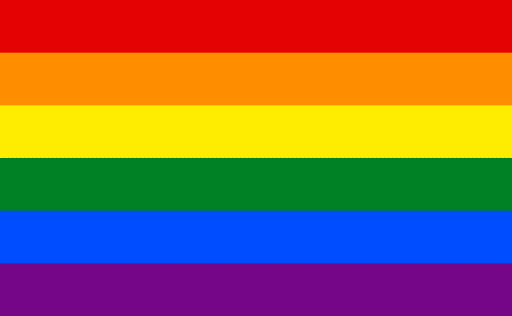 LGBTQ+ rainbow flag
LGBTQ+ rainbow flag
In 2015, a queer flag was created to symbolize queer pride. The colors of the flag feature shades of pink next to each other as well as shades of blue to represent same-gender attraction. The orange and green stand for non-binary people. Black and white represent asexual, aromantic as well as agender spectrum folks.
 One of queer’s flag
One of queer’s flag
One of the most commonly used queer flags today is the so-called chevron flag. It originated on Tumblr in 2016. The flag features lavender because it is a queer color as well as off-white. After all, all colors of the rainbow are visible in white light. The chevron is similar to military imagery, reminding people of queer individuals’ pride in the radical anti-assimilation of queer identity.
 Queer chevron flag
Queer chevron flag
The original version of the flag was deemed to be a sensory trigger with a pure white background.
 Original queer chevron flag
Original queer chevron flag
There are also several other alternate versions of the queer flag designed by Tumblr users.
This alternate flag was created in 2016 not as a replacement for the pride symbol, but rather as an alternative for the pride flag.
 Alternate queer pride flag
Alternate queer pride flag
How to Know if You’re Queer?
For starters, think about whether the term fits you. Also, learn more about its history and reclamation. It is important to understand the background of the term to apply it to your identity or sexual orientation.
You may identify as queer if the label:
- Makes you feel happy, delighted, excited, joyful
- Gives you a sense of comfort
- Makes you feel like you felony
- Helps you understand your sexuality and gender better
Casey Tanner, a queer licensed clinical counselor, and certified sex therapist says “You don’t need to have gone through a physical transition, have a particular kind of expression, or even have a queer dating or sexual history in order to claim the label”
Remember, the only person that can put a label on your sexual orientation and/or gender identity is yourself. Queer can also be a term to apply to your gender expression. So, if it feels right, if you’ve answered yes to all of the above questions, go ahead and claim the label!
Queer Enough
For many people being visibly queer is an important aspect of their gender expression and identity. For some, it may be much more difficult to pinpoint what it truly means to be visibly queer. Many queers question how they should or should not dress, what they should or should not do to be more physically visible in the community. Some queer folks even question whether they are queer enough.
There are also some queer-identifying people who worry about whether they are adequately queer. On many occasions raising the question of being queer enough is due to internalized phobia.
Since the term has a complicated story, many queers may feel the so-called queer imposter syndrome. Some may feel issues with being queer because they are:
- In straight passing relationships, people tend to assume they are straight
- New to the LGBTQ+ community
- Do not have any queer friends
- New to the world of dating or having a background that doesn’t seem queer.
Queer Style
Throughout LGBTQ+ history style and symbolism have played a huge role for the community. Historically, there was a code for gay men in the 19th century known as the handkerchief code. Lesbians have adopted the same code with a similar universal key chain signal.
There are so many queer styles that have been on-trend in recent years that it is hard to pinpoint whether the wearer is actually queer. Today, people find the concept of queer style more obscure. There really is no particular style other than an individual’s desire to showcase their personality and expression.
Queerness is not in your coat or jeans. It can be seen through your actions or attitude but it does not have to be. It is for you to own and showcase to the world if you want to. There really is not a right or wrong way to be queer, just be yourself and your style will shine through.
How to Support Queer People
It is tremendously important to support and raise awareness as much as possible. Unfortunately, violence against queer people is pervasive. So, here are some of the ways to step up and show your support for queer folks.
- Always use inclusive language, correct people who do not use inclusive language
- Do not assume someone’s gender identity based on their expression or sexual orientation
- View the world through a queer lens. Would you be offended if someone did or said a certain thing?
- Speak out against injustice and act accordingly!
- Educate yourself and others on the history of terminology and appropriate use
These are some of the ways you can start showing your support. A good ally is a person that is visible and vocal. Human rights matter and it is important to stand in solidarity against homophobia, biphobia, and transphobia. Seek out the resources that help you showcase your support as much as possible.
The word ally is very powerful. So, be an ally to your queer friends, coworkers, relatives, neighbors. An ally is a person that is committed to equality and speaking out against injustice and discrimination. You can be a great ally to queer folks by:
- Joining LGBTQ+ organizations in your area
- Volunteering at LGBTQ+ events
- Wearing LGBTQ+-friendly pins, buttons, accessories
- Attending LGBTQ+ rallies and marches
- Advocating for policy changes
Helpful Resources
There are many resources available online to learn more about the LGBTQ+ community and help with self-identification. Some of them may come from the most unexpected places. Among the resources that we recommend are the following:
Queer Podcasts
Listening to these queer podcasts can help open up your world to all things queer. This limited list offers everything from educational to raunchy but feel free to go out and find your own podcast to enjoy!
“Inside the Closet”
“Queery”
“Bad in Bed”
“LGBTQ&A”
“Hoodrat to Headwrap: A Decolonized Podcast”
“Gender Reveal”
“Nancy”
“Food 4 Thot”
Books
Reading queer books may help tremendously in terms of self-identification as well as education. Some of the best queer memoirs can be a powerful tool for both queer people and allies.
“How We Fight for Our Lives: A Memoir” by Saeed Jones
“Darling Days: A Memoir” by iO Tillett Wright
“The Fixed Stars: A Memoir” by Molly Wizenberg
“Sissy: A Coming-of-Gender Story” by Jacob Tobia
“Dear America: Notes of an Undocumented Citizen” by Jose Antonio Vargas
“The Other Side of Paradise: A Memoir” by Staceyann Chin
“Fun Home: A Family Tragicomic” by Alison Bechdel
“In the Dream House: A Memoir” by Carmen Maria Machado
TV Shows
Watching a few great shows on queer culture and about queer people can also be a great resource for LGBTQ+ people as well as their allies. These are just some of the shows you can watch to learn more.
“Will and Grace”
“Queer as Folk”
“Queer Eye”
“RuPaul’s Drag Race”
“Bonding”
“Elite”
“Sex Education”
“Grace and Frankie”
“AJ and the Queen”
“Orange Is the New Black”
Gallery
An alternative queer flag with the letter Q on it:
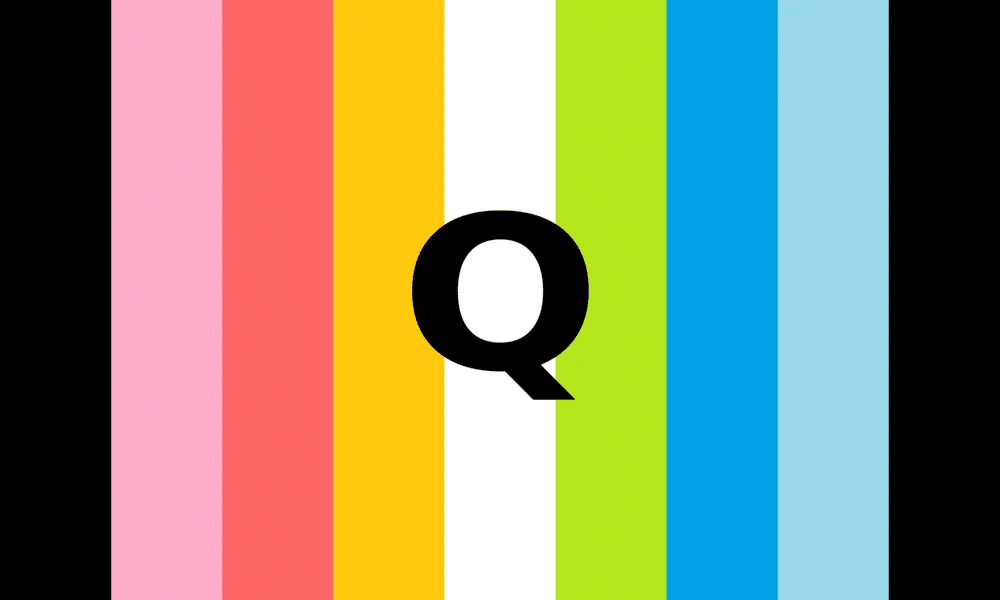 Alternate queer flag
Alternate queer flag
A simplified version of the queer flag:
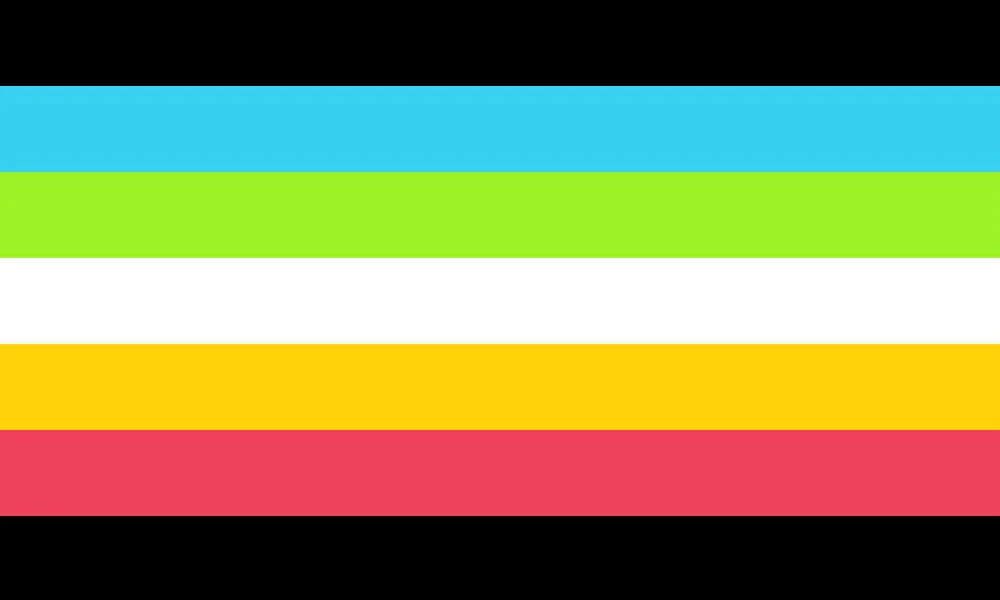 Simplified queer flag
Simplified queer flag
Rainbow sun version of the queer flag:
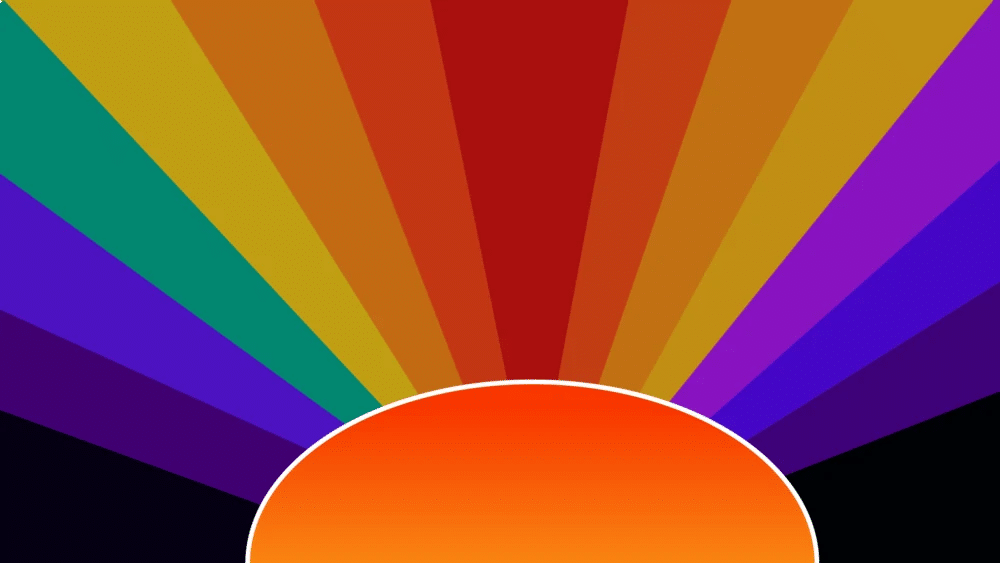 Alternate queer flag
Alternate queer flag
Another variant of the queer flag found online:
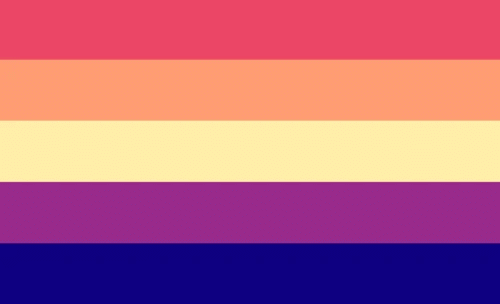 Another variant of the queer flag
Another variant of the queer flag
Pastel queer flag:
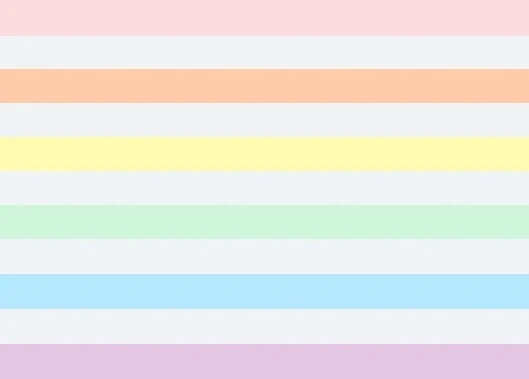 Pastel queer flag
Pastel queer flag
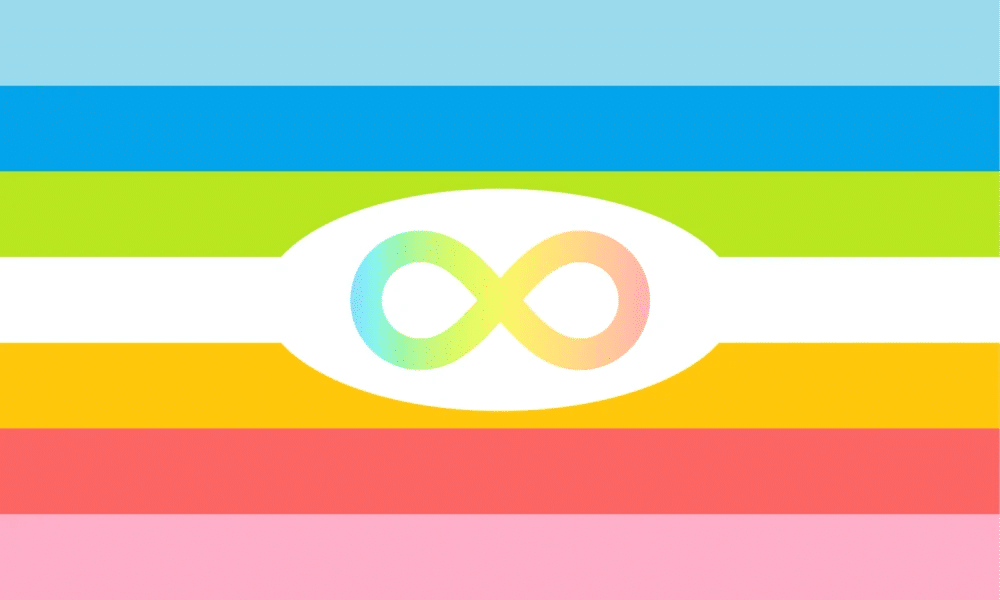 Neuroqueer flag
Neuroqueer flag


